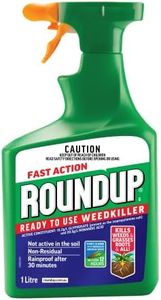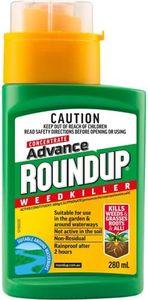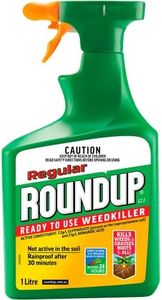We Use CookiesWe use cookies to enhance the security, performance,
functionality and for analytical and promotional activities. By continuing to browse this site you
are agreeing to our privacy policy
4 Best Crabgrass Killers
From leading brands and best sellers available on the web.Buying Guide for the Best Crabgrass Killers
Choosing the right crabgrass killer is all about finding a product that fits your lawn’s needs and the type of crabgrass problem you have. Some products are better for preventing crabgrass before it grows, while others are designed to kill it after it’s appeared. Think about the size of your lawn, whether you have pets or children playing on the grass, and what other types of plants are nearby. Always read application instructions carefully and consider the timing—sometimes, when you use the product is just as important as what you use.Type (Pre-Emergent vs Post-Emergent)This refers to whether the crabgrass killer is meant to prevent crabgrass seeds from sprouting (pre-emergent) or to attack crabgrass that’s already growing (post-emergent). Pre-emergents are best applied in early spring before you see any crabgrass, while post-emergents are for visible patches. Pick pre-emergent if you want to stay ahead of crabgrass, or post-emergent if you’re dealing with an existing problem.
Active IngredientThe active ingredient is the chemical in the product that targets crabgrass. Common ones include dithiopyr, pendimethalin, or quinclorac. Different ingredients can work better in certain climates or for specific types of grass. It’s important to check that the active ingredient is safe for your type of lawn grass and addresses crabgrass effectively.
Formulation (Granular vs Liquid)Crabgrass killers come as either granules or liquids. Granules are often spread using a lawn spreader and are easy for covering large areas, while liquids are sprayed and can be more targeted. Liquids tend to act faster but may require careful application. Your choice depends on the size of your lawn and how confident you are in applying the product evenly.
Selectivity (Selective vs Non-selective)Selective products target crabgrass and similar weeds without harming most lawn grasses, while non-selective products can kill any plant they touch, including your lawn. For general lawn use, selective products are usually best. Non-selective are only for spot-treating cracks in driveways or areas where you don’t want anything growing.
Safe for Lawn TypeDifferent lawns are made up of different types of grass, and not all crabgrass killers are safe for all lawns. Always check the label to see if the product is approved for your specific grass type, such as Kentucky bluegrass, fescue, or Bermuda. Picking the right one helps prevent damage to your good grass.
Application TimingWhen you apply the crabgrass killer matters. For pre-emergents, early spring before soil warms up is usually best, while post-emergents are generally used when you see crabgrass actively growing. Match the timing to your weed problem—if in doubt, follow the guidelines for your region.
Rainfastness and Watering RequirementsRainfastness refers to how soon after application the product is resistant to being washed away by rain or watering. Some products need to be watered in; others will stop working if it rains too soon. This affects how and when you apply, so check the label and plan around the weather.
Pet and Child SafetyIf you have kids or pets that use the lawn, look for crabgrass killers labeled as safe when dry or safe for pets and children. The safety period may vary. Always allow the product to absorb or dry as instructed before use of the lawn is resumed.




